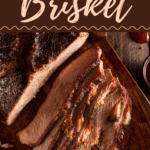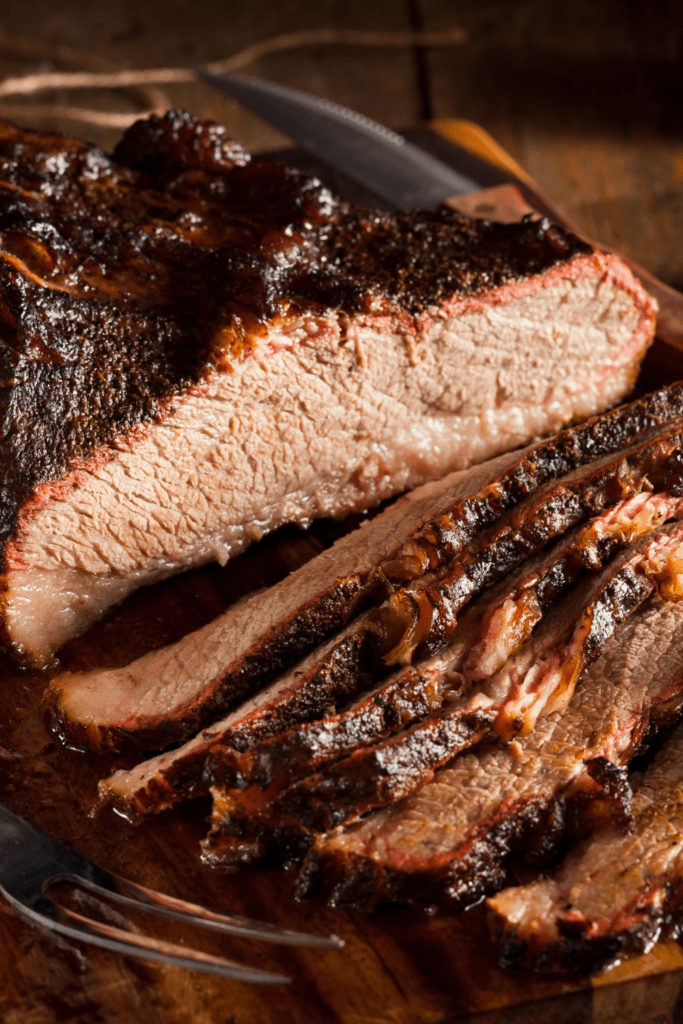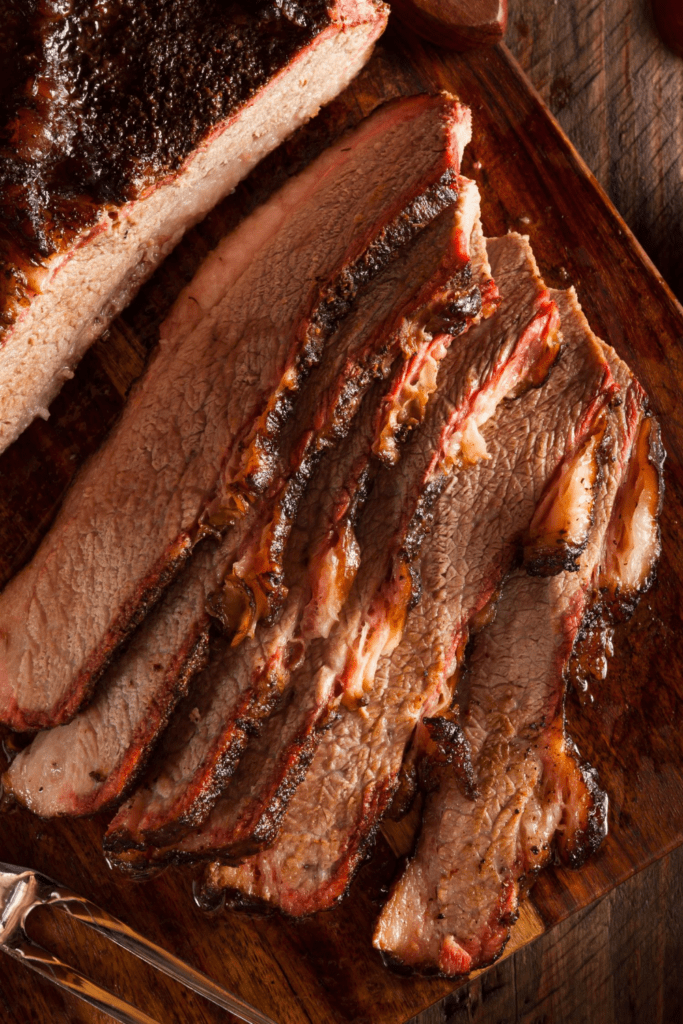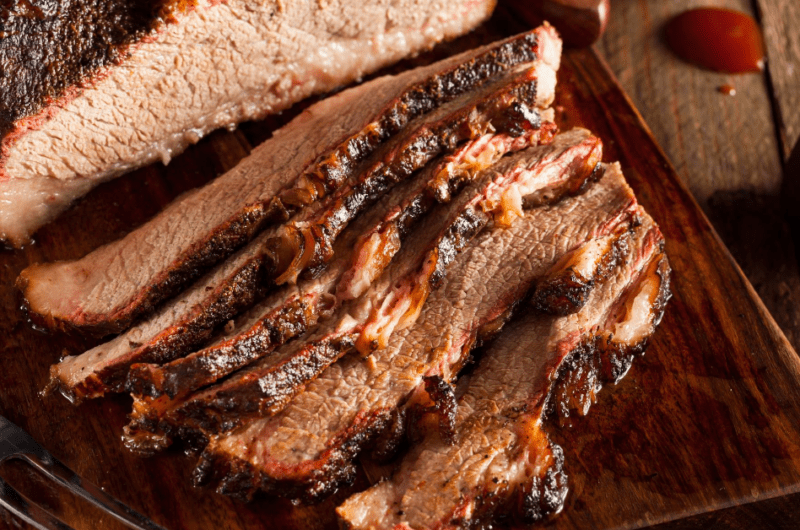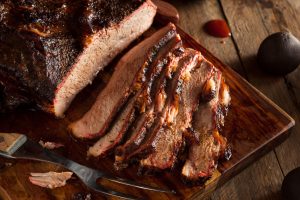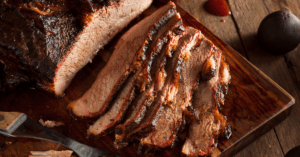A good brisket is full of flavor and melts in your mouth! But what happens if you can’t eat all of that meat? You might be hesitant to save and reheat your brisket, thinking it might lose all its juices or turn into jerky. Luckily, I’ve found the best ways to store and reheat your brisket so it will be almost as good as it was fresh out of the smoker. There are a few different methods for reheating brisket, and each has pros and cons. Here are the top 3 ways to reheat brisket without drying it out. Keep scrolling for all the ways to store, reheat, and reuse your juicy, delicious brisket.
How to Reheat Brisket in the Oven
With a few precautions, reheating brisket in the oven can be a great solution to too many leftovers. Here’s what to do: First, don’t give in to the temptation to blast your meat with high heat. Preheat your oven to 325°F. A higher temp than that will suck the moisture out of your brisket and will result in tough, chewy meat. While the oven preheats, get your leftover brisket out of the fridge. Place the brisket on a baking sheet and let it sit at room temperature for 20 to 30 minutes. This will ensure that it reheats evenly, and you won’t have to worry about a cold center. Right before you pop your brisket in the oven, give it some extra juices. You should always save any leftover cooking juices when roasting meat. But in a pinch, you can always use a cup of beef broth instead. Next, cover the brisket in a double layer of foil. Make sure it’s sealed down by crimping the foil around the edges of the pan. Double check for a tight seal and no holes! Finally, pop your covered brisket in the oven. For a whole brisket, you’ll have to wait about an hour. For brisket that is already cut, cook it for about 20 minutes. Once it’s warmed up, enjoy your reheated, but still perfectly moist meat.
How to Reheat Brisket Using the Sous Vide Method
A sous vide is a tool that gives your brisket a water bath. It heats it back up without actually cooking it any longer. This can take a significant amount of time, but if you make brisket often, you’ve probably become accustomed to a long wait. Here’s what to do: Let the meat rest outside of the fridge for 20 to 30 minutes to bring it to room temperature. Then place the brisket in a vacuum-sealed bag. Fill the sous vide bath with enough water to cover the brisket completely and set the sous vide to 150°F. Then let your brisket have some self-care time in a nice warm bath. When the meat has reached the same temperature as the water, it’s ready to eat. The downside is, for a whole brisket, this could take up to 5 hours. You can speed up the sous vide process by slicing your brisket. Ordinarily, slicing it up might make it dry out, but that won’t happen with this high-tech method! Brisket sliced in about 1/2-inch pieces will warm up in about 10 minutes. Thicker slices, like 2-inch thick pieces, will need up to 2 hours. But either way, you have a whole new brisket meal with very little work of your part, thanks to the neat sous vide machine.
How to Reheat Brisket in the Smoker
Using a grill or smoker to reheat brisket will get results very similar to the oven method. The main difference is the time it takes to reheat. There are a few tricks to pay attention to. Here’s what to do: Defrost the meat thoroughly to room temperature. Heat your grill to 225°F. To make sure you don’t blast your brisket with heat, you’ll want to use the 2-zone cooking set up. This is where you have a direct heat zone where your heat or charcoal is hottest, and you place the meat on the opposite side, the cool zone. Wrap your brisket in foil and place it in the indirect, cool zone. Let it heat until the meat is at 155°F. When it reaches the correct temperature, unwrap the brisket, and move it to the direct heat zone for just 5-10 minutes. It should be at 160°F to serve. Note: If you’re cooking on a gas grill, set it to medium heat to reheat the brisket.
How to Properly Store Brisket
If you’re going to freeze your brisket, think about keeping it whole rather than slicing it up. This will keep most of the juices and moisture inside, and will be less likely to be contaminated. It will take up more space in the freezer and take longer to reheat, but I think it’s worth it! The best way to store brisket is in a vacuum-sealed bag. But if your kitchen is not as high tech as that, you can still trap in the moisture by sealing your brisket in plastic wrap, then wrapping it in foil, and popping it into a freezer-safe bag. Quick Tip: Add in some of the leftover juices and let them sink in before you wrap the brisket to keep it nice and moist.
Why You Should Avoid Microwaving Your Leftover Brisket
Microwaving brisket will result in pretty dried out meat. This is because a microwave works by turning water molecules into steam. So your brisket will steam all of its good moisture out and it will be dry, rubbery, and not very tasty! This method may seem like a quick option, but you’ll be disappointed with the end result.
What To Do With Your Leftover Brisket
If you’re looking for ways to use your leftover brisket other than just eating it up the minute it’s warm, I have some ideas for you: Give yourself a break from the cooking and go with something easy and fast, but so delicious – a brisket grilled cheese. My mouth is watering just thinking about it! Start your day off with a protein boost by adding in some brisket to an egg and potato breakfast hash. Yum! For a classic recipe with a fun twist, try Brisket shepherd’s pie with jalapeno cheddar mashed potatoes. It’s so decadent! Brisket makes the perfect topping for street tacos, a meaty quesadilla, or even some rich, brisket-y enchiladas. Show off your skills with an awe-inspiring brisket chili, or baked beans for the next cook-out. If you have a dinner party coming up, impress your guests with a brisket bruschetta or some brisket empanadas. They’ll make the perfect appetizer. Click on a star to rate it!
Average rating 4.8 / 5. Vote count: 4 No votes so far! Be the first to rate this post.
Share on social media: Let us improve this post!
